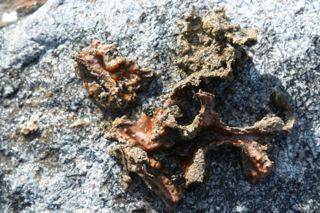Today we went to an area that is classified as Antarctic Specially Protected Area or ASPA. These are sites that are of special historic or ecological significance and a permit is required for entry.
The area comprises sloping ice-free ground with summer ponds and small meltwater streams draining from the Canada Glacier to Lake Fryxell. It is is on the other side of the Canada Glacier and the hike took ca 1.5 hours including the crossing of Canada Glacier.
The Canada Glacier stream area has high biomass accumulations in comparison to most other regions of the Dry Valleys. Several moss species (Bryum argenteum, Hennediella heimii and Bryum pseudotriquetrum), lichens (Lecanora expectans, Caloplaca citrina) and freshwater algae (Prasiola calophylla, Tribonema elegans) have been described from the stream area (Management Plan for Antarctic Specially Protected Area No. 131).
Canada stream and Lake Fryxell
Cyanobacterial mats are also abundant. Oscillatoria, Leptolyngbya, Phormidium, Calothrix, Nostoc and Gloeocapsa are the common cyanobacterial genera the mats growing in the streams.
Cyanobacerial mats
Nostoc and other cyanobacteria growing on moss






